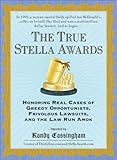 Ever wanted to pull off your own viral Internet hoax?
Ever wanted to pull off your own viral Internet hoax?
The Internet has made coming up with new and original ideas easy. Check out THE MUSEUM OF HOAXES for a list of stunts that have already been pulled off, and then think about putting your own unique spin on the event.
Still, trying to come up with a unique hoax idea or wacky news item that hasn’t been done before has been made more difficult by the proliferation of those forwarded emails that everyone must have received at some time or other. Just because your friend has sent you an email with a news item in it does not mean that the news item in question is true. As is often the case, the person forwarding the email may not have checked their facts before sending it. Remember – even though you were sent that forwarded email from a trusted friend or family member, they could have been duped somewhere along the way. You should always check your sources as well.
For example, there is a current email about recent “Stella Award Winners” going around. Named after the infamous lawsuit following a spilled cup of McDonald’s coffee, the Stella Awards are supposed to highlight outrageous court cases and lawsuits. The problem is that every single item listed in that particular email is false. Randy Cassingham of THIS IS TRUE created the Stella Awards as an offshoot of his popular subscription service of offbeat news stories, and is the only place to get true Stella Award stories. He’s even had to post information on his website about the bogus email being sent around.
No discussion about Internet hoaxes would be complete without mentioning Barbara and David Mikkelson’s SNOPES website. Snopes is the biggest clearinghouse of all known hoaxes and urban legends, and even some that aren’t even hoaxes yet. Snopes is considered such a leader in the debunking of hoaxes, when TopFive.com wanted to publish a list of fake facts to see if they would be sent around the Internet like so many other trivia lists are (“a duck’s quack doesn’t echo”), Chris White felt it was only proper to let Snopes in on the fun. Not because creating hoaxes is fun (which it is), but because he wanted to let Snopes know ahead of time that they wouldn’t have to research the validity of the “facts” contained in the email as they do with so many other mailings. Whenever you get anything that even smells remotely hoaxy, check Snopes out before you spread the message around.
So what do we learn from all these hoaxes and fake websites and corny emails? It’s simple — for every legitimate website filled with valid information, there’s at least 10 sites that are there just to make someone laugh. Web Watch is sure that if P.T. Barnum were alive today, he’d be the one leading the way. “This way to the egress,” indeed.
